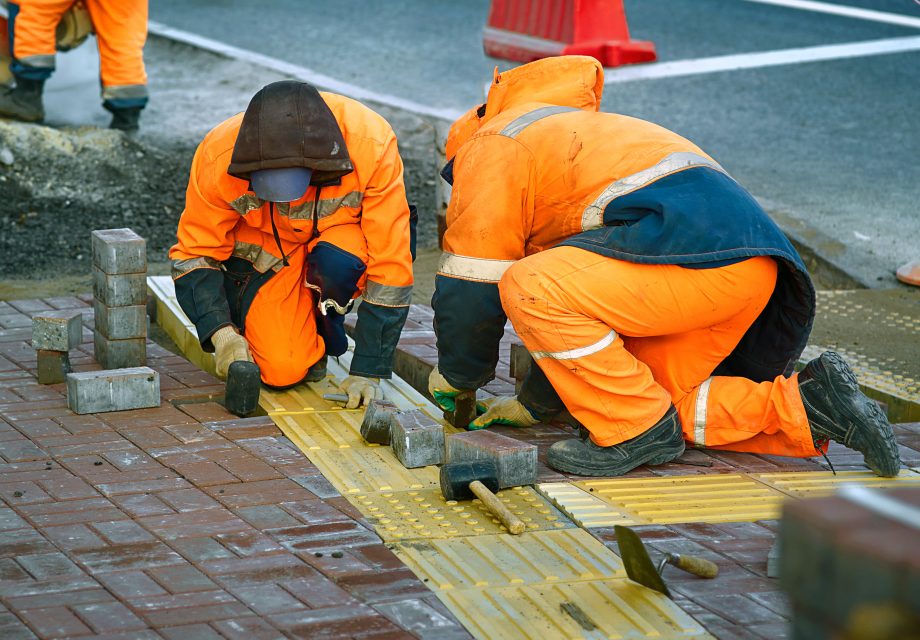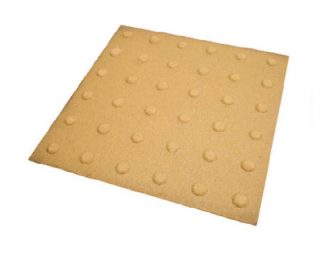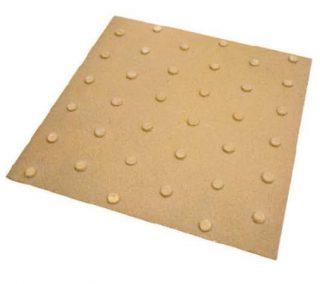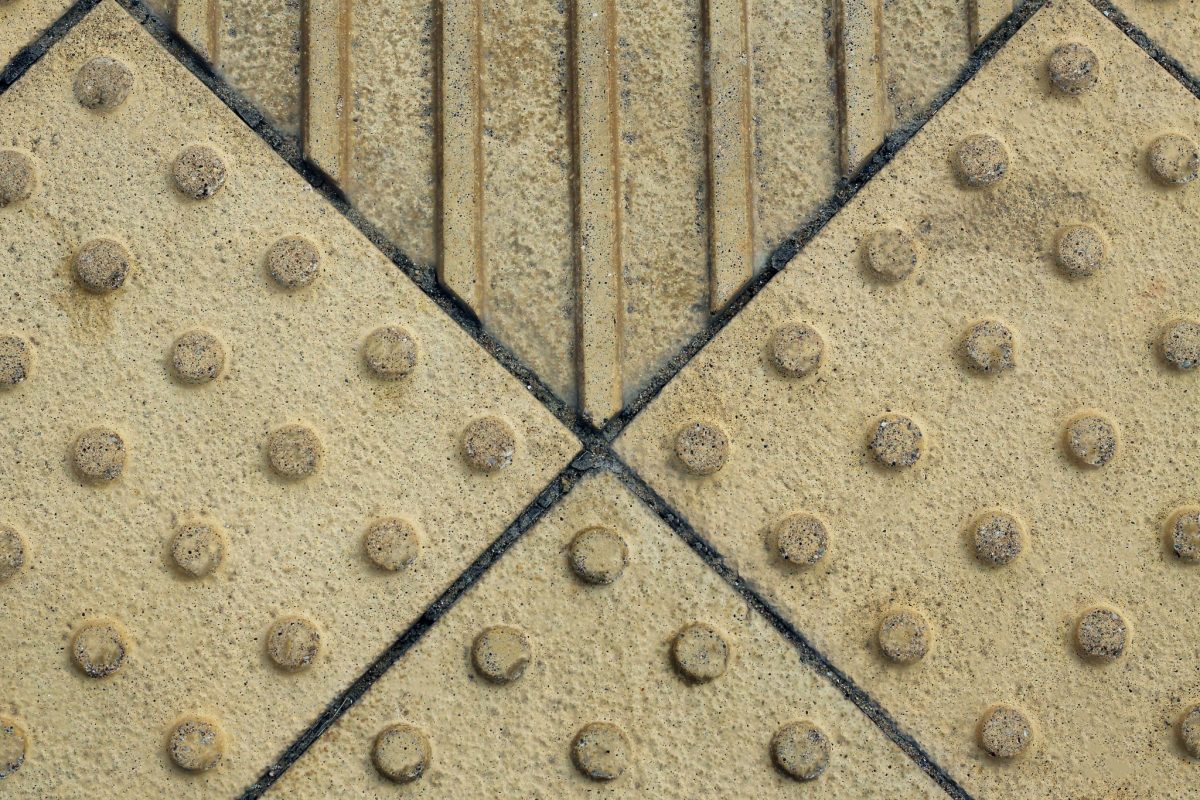As you can imagine, walking around with poor or no sight can be a scary and confusing experience. As part of Promain‘s aims to keep all staff and users safe, we would like to introduce tactile pavers and what they are used for.
What Are Tactile Pavers?
Tactile flooring guides and inform people with visual impairments. They intend to warn of potential hazards. In the pedestrian environment, visually impaired people will seek out and use these floor surfaces as a warning. Each type of tactile flooring has been designed and developed for a specific use.
The advantage of surface mounted tiles is that there is no need for excavation and therefore any disruption is minimized.

Tactile paving surfaces are suitable to convey important information to visually impaired pedestrians about their environment. For example, they can warn users of a hazard, give directional guidance, or notify the presence of an amenity.
Research determines visually impaired people can reliably detect, distinguish and remember a limited number of different tactile paving surfaces. They can also remember the distinct meanings assigned to each design. You can find the use of blister paving as a warning device at pedestrian crossings across the UK.
Below we will discuss the uses of each design of tactile pavers. It is important to use the right design to ensure any disabled users know what hazards expect.
In-Line Blistered Tactile Pavers
 Centrecoat Tactile GRP Paving System in-line blister tactile flooring is designed to provide a warning to visually impaired people where the up stand on a kerb is less than 25mm, or where the foot way has been made flush to the carriageway to aide wheelchair users.
Centrecoat Tactile GRP Paving System in-line blister tactile flooring is designed to provide a warning to visually impaired people where the up stand on a kerb is less than 25mm, or where the foot way has been made flush to the carriageway to aide wheelchair users.
You will find this beige tile at uncontrolled crossing points such as:
- Side road crossings
- Busy vehicle crossovers such as supermarkets or fuel stations
- In conjunction with pedestrian refuges
- With flat topped road humps used as road crossing points
- Traffic signal control junctions with no pedestrian phase (where studs are to indicate a road crossing point)
Off-Set Blister Tactile Pavers
 You can use Centrecoat Tactile GRP Paving System off-set blister tactile flooring on railway platforms. It compromised of flat topped domes set in evenly spaced rows parallel to the direction of travel along the platform. The off-set of the domes indicates the direction of travel towards the train.
You can use Centrecoat Tactile GRP Paving System off-set blister tactile flooring on railway platforms. It compromised of flat topped domes set in evenly spaced rows parallel to the direction of travel along the platform. The off-set of the domes indicates the direction of travel towards the train.
The relevant government bodies recommend the platform edge warning surface is for use at all off-street rail platforms including:
- heavy rail platforms
- off-street light rapid transit (LRT) platforms
- and underground platforms
Corduroy Tactile Pavers
You can use corduroy tactile flooring to warn visually impaired people of the presence of specific hazards, steps, ramps, level crossings or the approach to street platforms for Light Rapid Transport (LRT) such as trams or guided buses. You can also use this design where a pedestrian foot way joins / merges with a cycle route. Essentially, corduroy tactile flooring conveys the message “Hazard, Proceed With Caution”.

Conclusion
Inspect new street works to carefully ensure that the standards of reinstatement meet the requirements of the New Roads and Street Works Act 1991 and the associated codes of practice.
Hopefully we have introduced you to the requirements to help visually impaired staff and users. Want to find out more? Finally, for full guidance on tactile pavers and their installation, visit:
https://www.gov.uk/government/publications/guidance-on-the-use-of-tactile-paving-surfaces
For further information, visit these categories on our website:
Found this article interesting? Take a look at these other articles to find out more:




